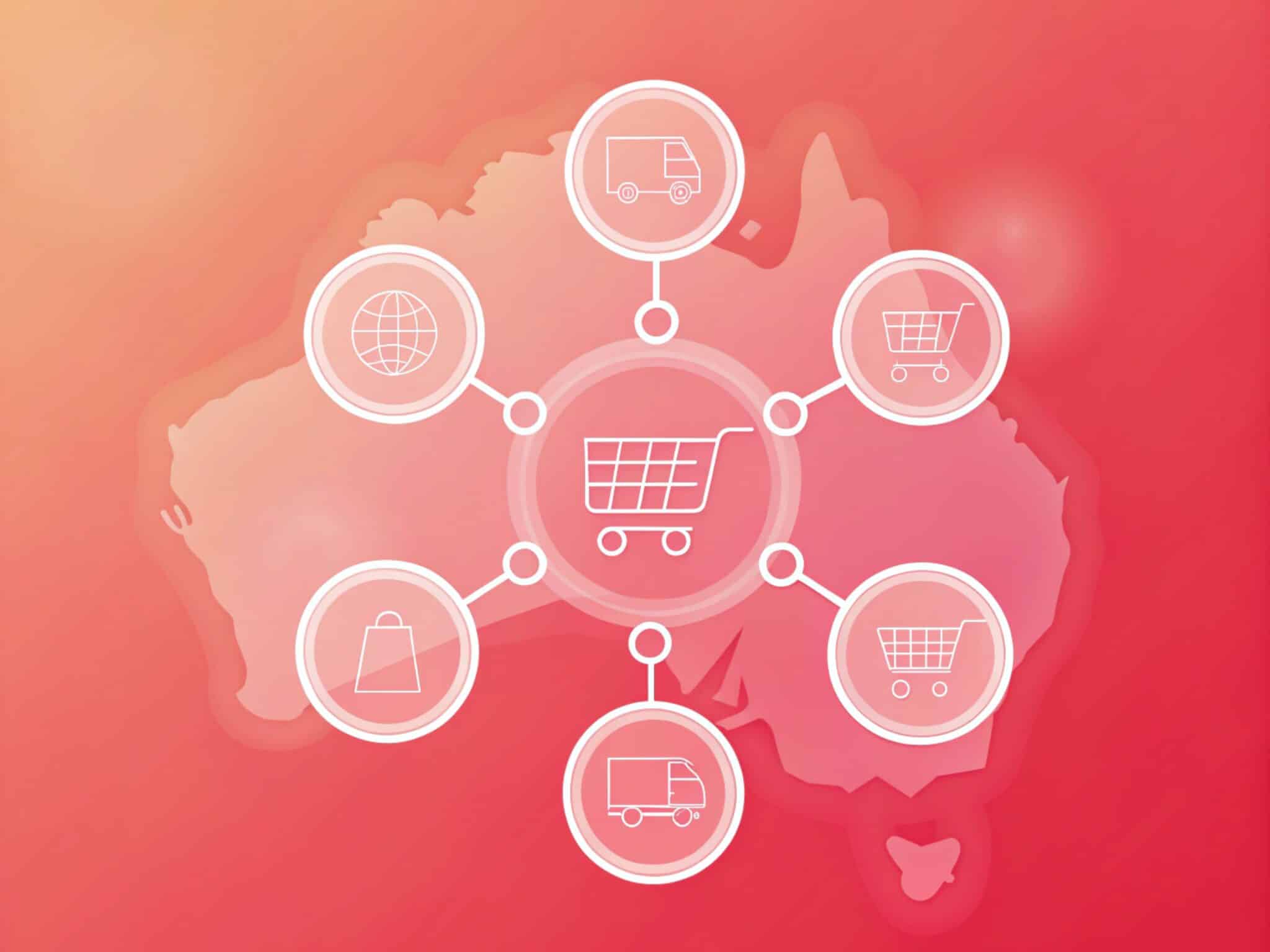E-commerce in Australia has soared to unprecedented levels, transforming the way we shop and how businesses connect with customers online. Looking back, we spent a staggering $69 billion online in 2024—a 12% jump from 2023—with trends continuing upward. From young trendsetters to older generations embracing digital shopping, e-commerce is reshaping retail across the nation.
In this deep dive, I’ll walk you through the latest Australian ecommerce statistics, consumer behaviours, and trends that are defining the market. Let’s uncover what’s driving this boom and how businesses can stay ahead.
What Are the Latest Australian Ecommerce Spending Figures?
First things first, let’s talk numbers. Australians spent a record-breaking $69 billion online in 2024, nearly doubling the $28.5 billion spent pre-pandemic in 2019. Ecommerce now makes up almost 20% of total retail spending, proving it’s no longer just a trend—it’s a core part of how we shop.
This growth isn’t random. Factors like population increases, changing habits, and economic pressures pushing us to hunt for deals online have all fuelled this surge. For businesses, this signals a massive opportunity to tap into a thriving digital market.
How Many Australian Households Are Shopping Online?
Here’s the deal: online shopping is now the norm. A whopping 9.8 million Australian households made online purchases in 2024, covering the vast majority of homes. Over 83% of shoppers buy online at least monthly, with younger generations like Gen Z and Millennials often shopping weekly.
This widespread adoption shows ecommerce isn’t just for tech-savvy youth. It’s a daily habit for most of us, making it critical for businesses to have a strong online presence.
Related article: Hire the Best eCommerce Web Designer in Sydney
How Do Different Generations Behave in Australian E-commerce?
Let’s break this down by age group. Millennials lead the pack, spending nearly $25 billion online, followed by Gen X at $19 billion and Gen Z at $12 billion. Even Baby Boomers ($10 billion) and the Builders generation ($2.7 billion) are getting in on the action.
Younger shoppers dominate frequency, with 44% of Millennials buying weekly. They also lead in social commerce, while older generations are catching up fast. This mix means retailers must cater to diverse needs across all ages.
Why Are Older Generations Increasing Their Online Spending?
Surprised by older shoppers jumping online? Don’t be. Baby Boomers boosted their ecommerce spending by 17.6%, while the Builders generation saw an impressive 22.9% rise. This shows a growing comfort with digital platforms, even among those who were once hesitant.
For me, this trend highlights a key lesson: never underestimate any demographic. Retailers should simplify user experiences and offer clear guidance to keep this momentum going with older customers.
Related article: Best Hosting Options for Your Australian Ecommerce Website
What Are the Most Popular Product Categories in Australian E-commerce?
Wondering what we’re buying online? Online marketplaces like Amazon and eBay top the list of categories, raking in $16 billion as Aussies love the convenience of a general, one-stop shop. Food & Liquor comes in second at $13.6 billion, with Fashion/Apparel trailing behind at $9.6 billion.
Interestingly, everyday items like groceries and takeaway meals are now huge online categories. This shift shows ecommerce is no longer just for gadgets or clothes—it’s for everything we need.
Why Are Marketplaces and Mega-Retailers Dominating Australian Ecommerce?
Marketplaces like Amazon Australia added over 1 million new customers in 2024 alone, now reaching nearly 8 million shoppers. Their fast delivery and massive product range have set a high bar. Newcomers like Shein and Temu are also gaining traction with low prices and high variety.
Traditional retailers are feeling the heat. Many are joining these platforms or boosting their own online stores to keep up. For businesses, partnering with marketplaces is a smart move to reach more eyes.
How Important Is Delivery Experience for Australian Shoppers?
Let’s face it—delivery can make or break a sale. A huge 85% of Australian shoppers say reliable, on-time delivery is their top priority when choosing where to shop. Meanwhile, 56% want free shipping, and 65% value easy returns.
Younger shoppers, especially Gen Z and Millennials, crave speed and options like click-and-collect. Retailers who invest in seamless delivery and tracking tools often see lower cart abandonment and happier customers.
How Does Website Design Impact Australian E-commerce Success?
Here’s a wake-up call: poor website design is killing conversions. The stats show 38% of users will abandon your site if it looks unattractive, and a massive 88% won’t come back after a bad experience. Ouch.
This is exactly why I always tell clients that implementing proven ecommerce design best practices isn’t optional—it’s make-or-break for your online store.
We’re talking mobile responsiveness, lightning-fast loading times, intuitive navigation, and checkout processes that don’t make people want to throw their phone. These design decisions directly impact the revenue growth we’re seeing across successful Australian ecommerce businesses.
What Do Australian Shoppers Expect From Returns and Refunds?
Returns matter—a lot. Around 65% of online shoppers say hassle-free returns are key to a great experience, with that number jumping to 72% for Gen Z and Millennials. Most prefer cash refunds over store credit, yet only 42% of retailers offer this.
Here’s my take: simplifying returns with clear labels and policies isn’t just nice—it’s a must. It builds trust and keeps customers coming back. Are you meeting this expectation?
Related article: WooCommerce vs Shopify
How Is Social Commerce Shaping Australian E-commerce Trends?
Image you’re scrolling through Instagram, you see someone using a product you love, then you click and buy it straight from their post. That’s social commerce, and it’s huge. About 74% of Gen Z and Millennials browse or buy via platforms like TikTok and Facebook weekly. Influencers drive 58% of purchases among 18-29-year-olds.
Sales from social commerce hit $4.9 billion in 2024 and could reach $8 billion by 2029. Brands investing in shoppable content and creator partnerships are capturing this fast-growing channel. Is your business on board?
Why Is Recommerce Gaining Popularity in Australia?
Here’s something exciting: second-hand shopping, or recommerce, is booming. About 32% of Australians bought more pre-loved items in 2024, with over 50% of Gen Z doing so monthly. It’s driven by cost savings and a push for sustainability.
Platforms like eBay see 90% of users engaging in recommerce, while retailers like Birdsnest are launching resale sections. For businesses, tapping into this eco-friendly trend could attract a loyal, value-driven audience.
How Do Loyalty Programs Impact Australian Ecommerce Shoppers?
Loyalty is gold. A staggering 92% of online shoppers are enrolled in at least one loyalty program, and 95% are willing to share data for better deals or free shipping. Subscription models like Amazon Prime are also gaining steam with premium perks.
My advice? Build loyalty with meaningful rewards. Whether it’s discounts or early access, giving customers value keeps them hooked. How are you rewarding your shoppers?
What Are the Data Privacy Concerns in Australian Ecommerce?
There’s a flip side to data sharing. While shoppers want personalised deals, 71% worry about how their info is used. Trust is fragile, and transparency is non-negotiable.
I’ve seen businesses lose customers over murky privacy practices. Retailers must communicate clearly and give users control over their data. Balancing personalisation with privacy is the key to long-term loyalty. Are you prioritising trust?
What Does the Future Hold for Australian Ecommerce?
Let’s look ahead. The future of Australian e-commerce is bright, with trends like AI-driven personalisation, omnichannel retailing, and faster delivery leading the way. Sustainability through recommerce and the rise of social commerce are also set to grow.
Businesses that adapt to these shifts—using data insights and focusing on customer needs—will thrive. The market is evolving fast, so staying agile is your best bet. What’s your next move?
How Is Sydney Leading as Australia’s E-commerce Powerhouse?
Let’s zoom in on Sydney, the heart of Australia’s online retail scene. According to the Australia Post eCommerce Report 2025, Sydney’s central postcodes show some of the highest online shopping volumes per capita. It’s a hotspot of activity, driven by wealth and population density.
Sydney shoppers demand diversity—from fashion to sustainable goods—and expect top-notch delivery options. They’re also big on social commerce, with platforms like Instagram shaping Gen Z and Millennial buying habits.
Retailers here face fierce competition but set national trends with innovations in AI personalisation and omnichannel strategies. Many successful businesses partner with specialised sydney web design agencies to implement these cutting-edge e-commerce solutions.
PRO Tip for Sydney Businesses: Focus on hyper-local marketing to target specific neighbourhoods and invest in fast, flexible delivery like click-and-collect. Embracing sustainability can also win over eco-conscious Sydneysiders.
Conclusion
Australian ecommerce is in full swing, with $69 billion spent online in 2024 alone and nearly 10 million households shopping digitally. From Millennials driving frequency to Baby Boomers catching up, every generation is reshaping the market. Trends like social commerce, recommerce, and the demand for seamless delivery show how diverse and dynamic this space is.
For businesses, success means prioritising convenience, value, and trust while staying ahead of innovations like AI and sustainability. Ecommerce isn’t just an option—it’s a must for growth. So, what steps will you take to connect with Australia’s online shoppers? Let’s make your strategy count.
Data sources:
https://ecommerce-report.auspost.com.au
https://finance.yahoo.com/news/australia-e-commerce-market-report-110100003.html
https://auspost.com.au/content/dam/auspost_corp/media/documents/ecommerce-industry-report-2023.pdf





